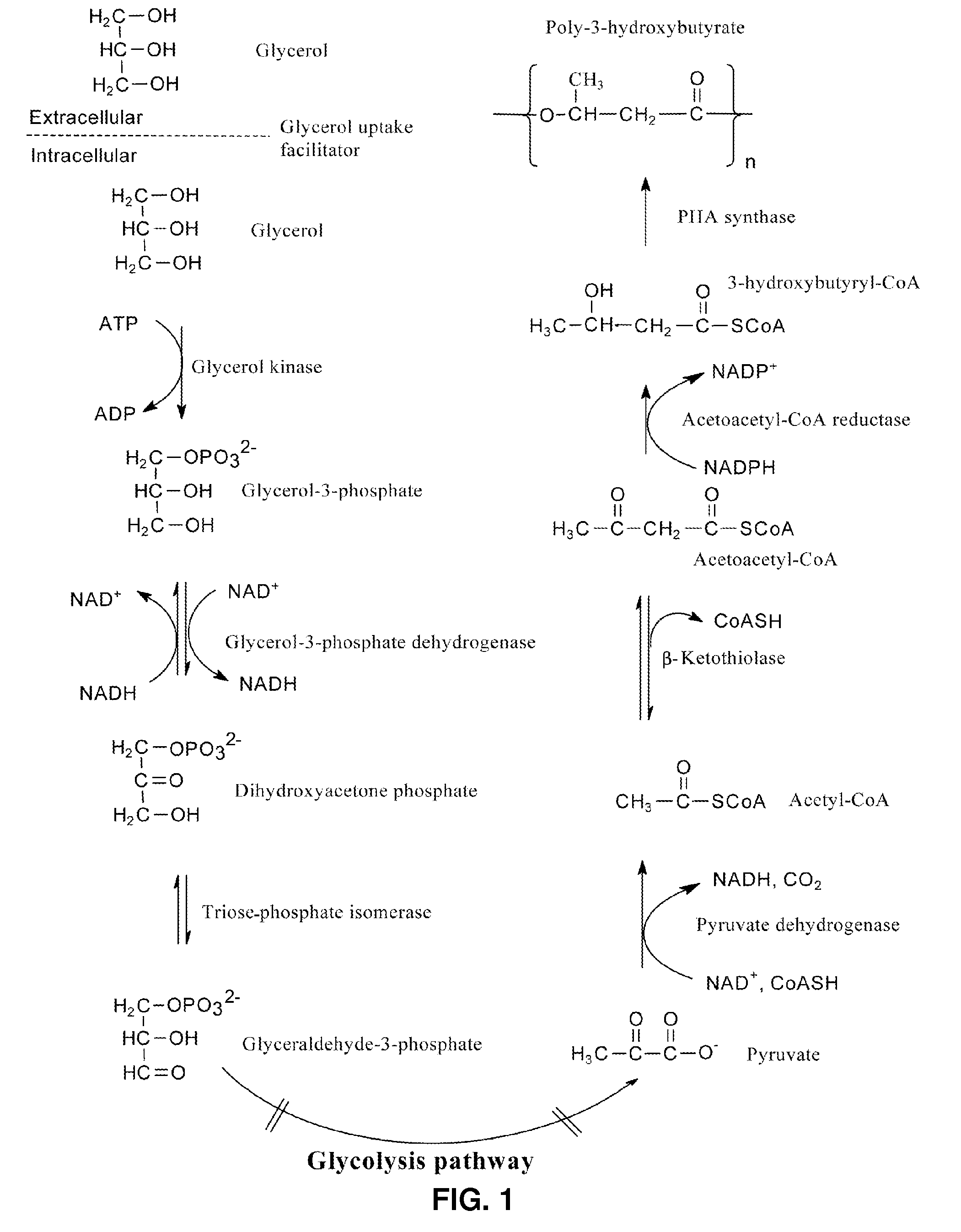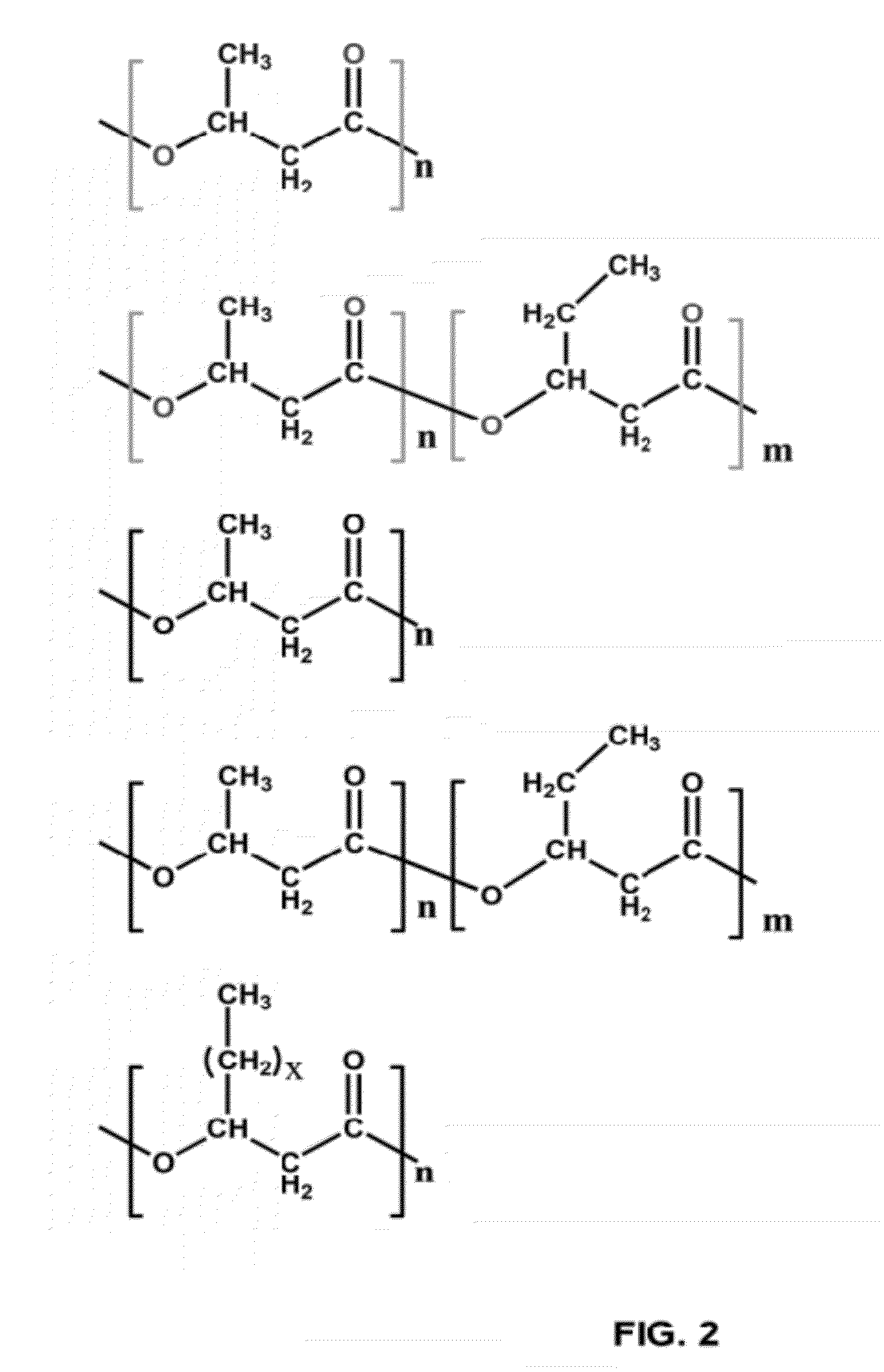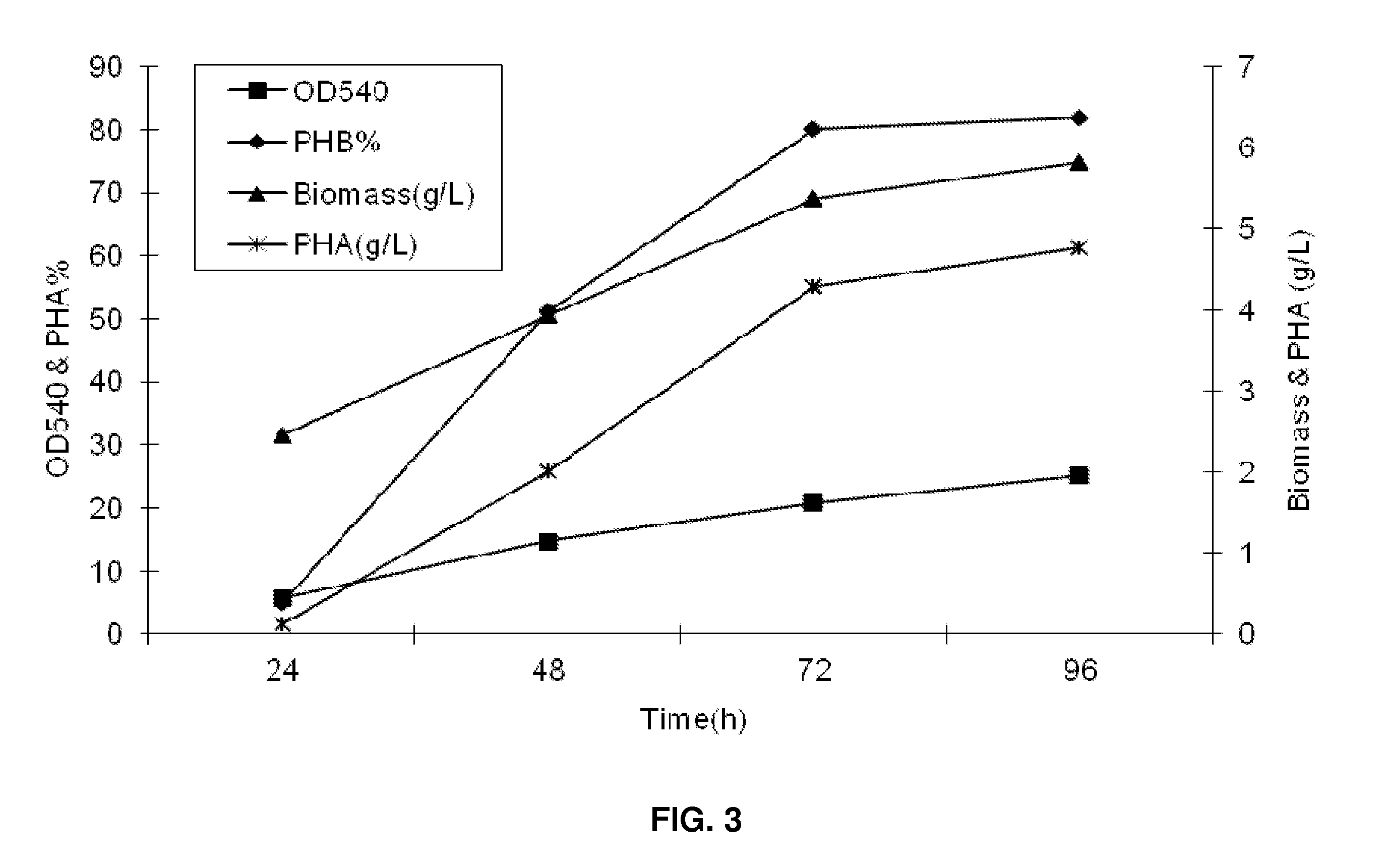Methods for producing polyhydroxyalkanoates from biodiesel-glycerol
a technology of biodiesel and glycerol, applied in the field of methods, can solve the problems of high production cost, affecting large-scale commercial production, and high cost of fermentation feedstock, and achieve the effect of increasing crystallization, elongation-to-break or resistance to breaking
- Summary
- Abstract
- Description
- Claims
- Application Information
AI Technical Summary
Benefits of technology
Problems solved by technology
Method used
Image
Examples
example 1
Production and Characterization of Poly-3-Hydroxybutyrate from Biodiesel-Glycerol by Burkholderia cepacia ATCC 17759
[0139]Introduction
[0140]In this example, glycerol, a byproduct of the biodiesel industry, is used by bacteria as an inexpensive carbon source for the production of value-added biodegradable polyhydroxyalkanoates (PHAs). To examine alternative uses for low-value biodiesel waste glycerol, small scale fermentations were initially performed by B. cepacia in shake flasks and analyzed for PHB production using glycerol as a carbon source. Physical-chemical properties of PHB produced by B. cepacia grown on reagent-grade glycerol were determined and it was established that the molecular mass decreased when glycerol was used as a carbon source. Subsequently, B. cepacia was used to convert biodiesel-glycerol to PHB via fermentation at a pilot plant (200-L) scale.
[0141]Burkholderia cepacia ATCC 17759 synthesized poly-3-hydroxybutyrate (PHB) from glycerol concentrations ranging fro...
example 2
Addition of Talc as a Nucleating Agent to Purified PHAs to Improve their Physical-Chemical Characteristics
[0194]This example demonstrates the effect of the addition of talc as a nucleating agent on the crystallization temperature of the homopolymer PHB and the copolymer PHB-co-5.6% PHV. Talc was added as a nucleating agent as described in Section 5.4 above.
[0195]FIG. 8 shows the crystallization temperature of PHB (• line, triplicate) and PHB with 5% Talc (♦ line, triplicate). With the addition of talc as a nucleating agent, crystallization temperature of the PHB increased by almost 15° C. (from 53.510° C. to 68.420° C.).
[0196]FIG. 9 shows the crystallization temperature of PHB-co-5.6% PHV (• line) and PHB-co-5.6% PHV with 5% talc (♦ line). The crystallization temperature of the copolymer increased by almost 25° C. (from 72.32° C. to 97.09° C.).
[0197]This observed increase in crystallization temperature is advantageous. The increase in crystallization temperature did not alter the me...
example 3
Mechanical Properties of PHB-co-Hydroxyvalerate (PHB-co-HV) Copolymers
[0198]In this example, the mechanical properties of PHB-co-Hydroxyvalerate (PHB-co-HV) copolymers were characterized using a tensile strength test. PHB-co-HV copolymers demonstrated much better elasticity than the PHB homopolymers.
[0199]Materials and Methods
[0200]PHB homopolymers and PHB-co-HV copolymers were tested using a tensile strength test. Such tests are well known in the art. The tensile strength test was used to evaluate mechanical properties of PHAs and elucidate more comprehensive material properties in addition to physical properties. The stress (σ)-strain (ε) curve (FIG. 10) show data on the mechanical properties of the tested materials. This includes well known characteristics such as tensile strength, at which the sample is stretched to break; yield strength, at which a material begins to deform plastically and prior to which the material will deform elastically and will return to its original shape...
PUM
| Property | Measurement | Unit |
|---|---|---|
| temperature | aaaaa | aaaaa |
| crystallization temperature | aaaaa | aaaaa |
| temperature | aaaaa | aaaaa |
Abstract
Description
Claims
Application Information
 Login to View More
Login to View More - R&D
- Intellectual Property
- Life Sciences
- Materials
- Tech Scout
- Unparalleled Data Quality
- Higher Quality Content
- 60% Fewer Hallucinations
Browse by: Latest US Patents, China's latest patents, Technical Efficacy Thesaurus, Application Domain, Technology Topic, Popular Technical Reports.
© 2025 PatSnap. All rights reserved.Legal|Privacy policy|Modern Slavery Act Transparency Statement|Sitemap|About US| Contact US: help@patsnap.com



